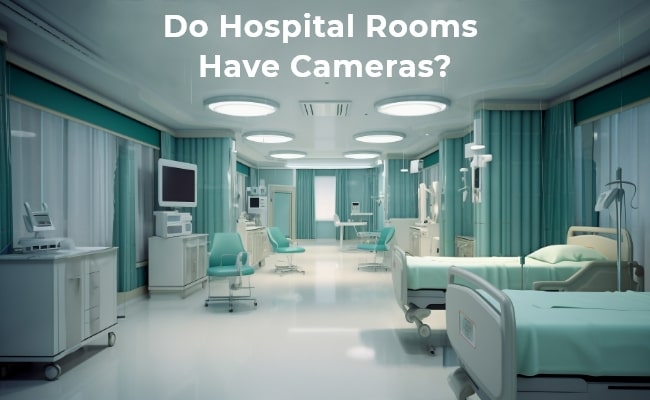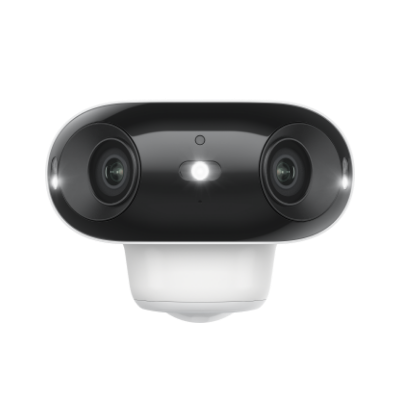Do Hospital Rooms Have Cameras?

The question of whether hospital rooms have built-in cameras is a complex one with no universal answer. Some hospitals and hospital units feature surveillance hospital cameras inside patient rooms, while many others forego their use or only have cameras in limited spaces.
This article looks deeper into the types of cameras in hospital rooms, what purposes they serve, laws and regulations surrounding their use, patient privacy concerns, and more. We will also tackle some frequently asked questions on the topic.
Do Hospital Rooms Have Cameras?
Many hospitals do have cameras installed in patient rooms, but not all of them. Some hospital rooms have cameras built into them - especially patient units that require intensive monitoring like emergency rooms, intensive care units, psychiatric wards, and special care units. General inpatient medical-surgical units less commonly have cameras inside each room.
For hospital rooms that do contain surveillance camera equipment, there are three main types:
Dome cameras have a rounded, hemispherical casing that houses the lens and other internal components. The dome shape allows the cameras to be visible and obvious, but more discreetly mounted flush in ceilings or walls.
Bullet cameras feature a long cylindrical bullet-like shape. The lens and electronics are housed in the narrow cylinder, which protrudes visibly from the mounting location to provide a full view of the room.
PTZ cameras stand for pan, tilt, zoom. They contain motorized mechanics that allow the camera unit to rotate left and right to pan across 180 or 360 degrees, tilt up and down, and optically zoom in and out.
Many patient rooms will have multiple cameras of varying types installed to provide views from different vantage points. If you are still wondering do they have cameras in hospital rooms? Then, yes! They have cameras in hospital rooms.
Is It Legal to Have Cameras in Patient Rooms?
United States hospital rooms can legally contain hospital room cameras provided specific regulations are followed per the Health Insurance Portability and Accountability Act, known commonly as HIPAA.
Hospitals must:
- Inform patients surveillance equipment is recording them
- Gain consent to film patients in writing whenever feasible
- Have policies that govern who can access footage and restrict availability only to patient care / hospital administration
- Store footage securely with encryption, firewalls, authentication controls and automatic logging of access
- Retain footage only for the minimum duration needed (usually 30-90 days)
As long as camera usage adheres to well-designed governance policies and recordings avoid exposing protected health information, hospital room surveillance is legal. But hospitals must be extremely careful, security-minded and transparent about how cameras monitor patients.
Why Do Hospital Patient Rooms Have Cameras?
Hospitals install cameras inside patient rooms rather than just hallways for a few primary reasons:
- Patient Safety and Rapid Response - Patients experiencing medical emergencies like seizures, cardiac arrest, respiratory failure or metabolic crises need immediate assistance. Camera footage lets nurses centrally monitor multiple patient rooms simultaneously so they can intervene at the earliest signs of trouble.
- Theft Prevention & Incident Investigation - Unfortunately thefts can occur within hospitals, especially devices like tablets and cell phones left unattended.
- Performance & Protocol Monitoring - Nursing supervisors or other hospital administrators may spot check camera footage to ensure nurses and physicians are following standard safety and care protocols properly.
- Medical Error & Liability Investigation - Camera footage is useful for analyzing medical errors, adverse events or poor outcomes.
Additionally, the Argus 4 Pro’s 4K resolution design and ture color night vision make it a versatile and convenient option for various hospital environments. Its weatherproof build, although designed for outdoor use, ensures durability and reliability in any indoor setting. By integrating the Argus 4 Pro, hospitals can enhance patient safety, improve operational efficiency, and ensure comprehensive surveillance coverage.
4k 180° Wire-free Color Night Vision Camera
4K UHD 180° Blindspot-free View; Color Vision Day and Night; 30% More Battery Life; Dual-band Wi-Fi 6; Smart detection.
For customers who need full-color night vision without visible spotlights, the Reolink Argus 4 Pro is the ideal alternative. Alternatively, if you want an affordable option that nonetheless provides good performance, the Argus 4 standard version is worth considering.
4k 180° Blindspot-free Wi-Fi 6 Camera
4K UHD 180° Blindspot-free View; Dual-band Wi-Fi 6; Smart detection; Easy Installation Anywhere
Prohibited Occasions for Hospital Room Cameras
Despite the benefits, cameras certainly can infringe on patient privacy if misused. Hospitals should clearly prohibit these scenarios:
- Recording in Bathrooms/Changing Rooms - Patients require privacy when toileting, bathing, changing clothes or otherwise being viewed in a state of undress. Signage should denote spaces lacking cameras.
- Releasing Footage Outside Hospital - Broadcasting footage beyond internal use breaches confidentiality. Only authorized staff should ever access recordings per strict user authentication policies.
- Publicly Discussing Patient Conditions - Video that reveals nurses discussing medical diagnoses or physicians revealing test results should not be recorded as it discloses protected health information.
- Recording Without Consent - Hospitals must prominently disclose surveillance policies and obtain patient consent in non-emergent scenarios. Signs should remind providers not to discuss private health matters on camera.
- Using Footage for Marketing or Entertainment - Recordings containing patients should never be accessed for purposes beyond healthcare operations like internal advertising or internet uploads for public consumption. Strict governance policies must reinforce appropriate use.

Can Hospital Cameras Record Audio?
Cameras used in hospital patient rooms typically do not record audio or sound. They focus solely on video surveillance. Audio recording introduces more substantive privacy risks as it enables entire private conversations to be captured. Hospital intercom call bell systems are relied upon instead for necessary vocal communication between patients and nurses.
In limited cases audio recording capability may exist for high risk units like psychiatric crisis wards where threats of self-harm might be spoken aloud as the only warning sign necessitating rapid in-person intervention. But these specialty units represent a tiny minority of spaces. Regular patient rooms do not utilize audio monitoring.
Do Patients Have Access to Camera Footage in Hospital Rooms?
Hospitals consider surveillance footage proprietary until deleted. Patients, family members and visitors do not have access rights to view or obtain copies of room recordings. Only authorized clinical staff, security teams, risk management personnel and hospital leadership would ever review or extract footage based on strict need-driven criteria.
In rare cases where camera evidence documents substantial medical errors, liability disputes or other incidents, sections of recordings may be subpoenaed for legal proceedings. But otherwise patient requests to access their own room footage would likely be declined or strictly limited to protect internal hospital interests first. Significant persistence including legal demands might compel exceptions if recordings contained proof of egregious infractions of patient rights.
FAQs - Hospital Room Camera Regulations
Are there microphones in hospital rooms?
No. While video surveillance exists, audio recordings remain prohibited in hospital patient rooms to preserve privacy and confidentiality around medical discussions. Nurses or physicians needing to vocally communicate with patients utilize room intercom/call bell systems.
How long do hospitals keep video footage?
Between 30 to 90 days is typical before automatic deletion of room recordings. Incident-related footage may undergo significantly longer retention. Storage duration varies based on hospital system policies and server capacities.
Do surveillance cameras violate HIPAA?
Not inherently, as long as cameras avoid capturing verbal discussions or displays of protected health information. Merely visually recording patients does not always breach regulations unless associated footage handling policies fail to keep images properly private and secure.
Conclusion
The question of whether hospital rooms have built-in cameras varies significantly by hospital, unit and local practice standards. What footage captures and how administrators utilize these surveillance systems matters most when evaluating privacy ethics and legal compliance.
Hospitals must strike the right balance between leveraging patient room cameras for safety and rapid response intervention versus respecting privacy rights by strictly limiting recording scope and accessibility.
Search
Subscribe for the Latest Updates
Security insights & offers right into your inbox


